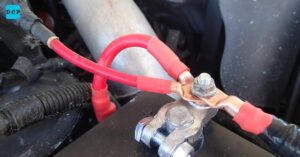Introduction
“Gel number plates must meet specific legal standards for font, spacing, and readability to be considered road legal.”
Gel number plates have gained popularity among vehicle owners due to their distinctive appearance and durability. These plates use a gel-based coating to create raised, 3D digits and letters. However, the legality of gel number plates on UK roads has been a topic of debate.
Understanding the legal framework surrounding these plates is crucial for ensuring compliance and avoiding potential fines. This article delves into the specifics of whether gel number plates are road legal, recent changes in regulations, and how to ensure your plates meet legal standards.
What Changed for Number Plates in September 2021?

In September 2021, the UK introduced new regulations concerning the design and display of number plates. The changes were aimed at improving clarity and standardizing the appearance of plates.
One of the major updates was the enforcement of black font only on number plates. This regulation mandates that characters on number plates must be in black, enhancing readability and uniformity across vehicles.
Another significant change involved plate markings. The new rules required that all plates must include the name and postcode of the plate supplier, ensuring traceability and accountability. These changes were part of broader efforts to curb fraud and enhance the accuracy of vehicle registration.
Black Font Only
The requirement for black font only simplifies the appearance of number plates. By enforcing a single color for the characters, the regulation aims to make plates more legible and consistent. This rule eliminates the use of colored or reflective fonts, which were previously allowed. The intention behind this change is to improve road safety and reduce the chances of number plate misuse.
For gel number plates, this means that the gel coating must not alter the standard black font requirement. Plates with any other color or style of text may not comply with the new regulations and could be deemed illegal.
Plate Markings
Plate markings are now a crucial aspect of vehicle number plates. Under the new regulations, all plates must display the name and address of the manufacturer or supplier. This addition helps in tracking the source of the plates and ensures that they meet the required standards. It also aids law enforcement in identifying where plates were produced and verifying their authenticity.
For gel number plates to be road legal, they must adhere to these marking requirements. This includes having the necessary supplier details clearly visible on the plate.
4D Number Plates — Are They Legal & What Are The Rules?
Other Revisions
Besides font color and plate markings, several other revisions were made to the number plate regulations. These revisions include specific guidelines on plate dimensions, spacing of characters, and reflective materials. The goal of these revisions is to standardize number plates across the UK and prevent variations that could lead to confusion or fraudulent activities.
Gel number plates must comply with these dimensions and spacing guidelines. Any deviation from the standardized format could render them non-compliant with the new regulations.
What About Regulation 11 and Surrey Police?
Regulation 11 of the Road Vehicles (Display of Registration Marks) Regulations 2001 outlines the requirements for vehicle number plates. This regulation specifies that plates must be made from a durable material and have clearly legible characters.
Surrey Police, like other law enforcement agencies, enforces these regulations to ensure that all number plates are compliant with the law. Vehicles with non-compliant plates, including those with gel coatings that do not meet the required standards, may face fines or penalties.
Can ANPR Cameras Read Gel Plates?
Automatic Number Plate Recognition (ANPR) cameras are used by law enforcement to automatically read and record vehicle registration numbers. These cameras rely on clear and consistent plate formats to function effectively.
Gel number plates, with their raised characters, can be read by ANPR cameras if they meet the standard size, font, and spacing requirements. However, if the gel coating alters the clarity of the characters or deviates from the standard format, it could interfere with the ANPR system’s ability to accurately capture the plate information.
DVLA Tacitly Agrees That Gel Plates Are Road Legal
The Driver and Vehicle Licensing Agency (DVLA) oversees the registration and regulation of vehicle number plates in the UK. While the DVLA has not issued specific guidance on gel number plates, it generally upholds the standards set by the law. As long as gel plates comply with the existing regulations on font, size, and markings, they are considered road legal.
The tacit approval by the DVLA means that gel number plates can be used legally, provided they adhere to all regulatory requirements. Vehicle owners should ensure their plates meet these standards to avoid any issues.
Parliament Shares Their Opinion on the Matter

Parliament has a role in shaping vehicle registration regulations through legislation. While there has been no specific act addressing gel number plates directly, Parliament supports the enforcement of clear and consistent number plate standards. This support aligns with efforts to improve road safety and reduce fraudulent activities.
As long as gel number plates meet the legal requirements set by Parliament, they are deemed road legal. Compliance with these standards is essential for vehicle owners to avoid legal complications.
GOV.UK Tells Us Number Plates Can Have Raised Digits
According to GOV.UK, number plates can indeed have raised digits as long as they adhere to the standard regulations. Raised digits, such as those found on gel plates, are permitted if they do not compromise the legibility or clarity of the plate. This allowance means that gel number plates with properly raised characters can be used legally.
Vehicle owners should ensure that the raised digits on their gel plates conform to the size, font, and spacing regulations outlined by the law.
Pros and Cons of Using Gel Number Plates
| Pros | Cons |
| Durability: Gel plates are resistant to wear and tear, making them a long-lasting option. | Legal Compliance: Gel plates must meet all legal requirements, which can be challenging. |
| Aesthetic Appeal: The 3D effect of gel plates can enhance the appearance of a vehicle. | Potential for Misreading: If not properly made, gel plates can interfere with ANPR cameras. |
| Customization: Gel plates offer more options for personalization and styling. | Cost: Gel plates may be more expensive than standard number plates. |
How to Ensure Compliance with Number Plate Regulations
To ensure that your number plates comply with regulations:
- Check the Specifications: Ensure that your plates meet the size, font, and marking requirements set by law.
- Verify the Supplier: Ensure that your number plates come from a registered and reputable supplier.
- Regularly Inspect Plates: Check your plates for wear and tear to ensure they remain legible and compliant.
Alternative Number Plate Options and Their Legality
Alternative number plate options include reflective plates, 3D-printed plates, and plates with different fonts or colors. Each of these options must meet the legal requirements set by UK regulations.
For example, reflective plates must comply with the standard font and size requirements. 3D-printed plates are legal as long as they adhere to the size, font, and marking regulations.
Additional tips
1. Choose a Reputable Supplier
Ensure that your gel number plates are purchased from a reputable and registered supplier. A reliable supplier will provide plates that meet all legal requirements and include the necessary markings, such as the supplier’s name and postcode. Check for reviews and verify that the supplier is compliant with UK regulations.
2. Regularly Inspect Your Plates
Periodically inspect your gel number plates for any signs of wear or damage. Ensure that the characters remain legible and that the gel coating does not affect the clarity or size of the digits. Regular maintenance will help keep your plates in compliance and prevent any potential issues.
3. Keep Updated on Regulation Changes
Stay informed about any updates or changes in number plate regulations. The laws surrounding number plates can evolve, and staying updated ensures that your plates remain compliant with current standards. Regularly check official sources such as GOV.UK or consult with legal experts if needed.
4. Avoid Customizations That Compromise Legibility
While gel plates offer customization options, avoid alterations that could compromise the legibility of the characters. Ensure that any customization, such as additional decorative elements, does not interfere with the required font size, spacing, or clarity. Compliance with legibility standards is crucial for passing ANPR checks and avoiding fines.
5. Consult with Legal Experts if Unsure
If you are uncertain about the compliance of your gel number plates, consider consulting with legal experts or professionals in the automotive industry. They can provide guidance on ensuring that your plates meet all legal requirements and offer advice on any potential issues related to number plate regulations.
ANSWER TO KEY QUESTION
- Are gel number plates legal in the UK?
- Yes, gel number plates are legal in the UK as long as they comply with the regulations regarding font, size, and markings.
- What are the new number plate regulations introduced in September 2021?
- The regulations introduced in September 2021 include the requirement for black font only and the inclusion of supplier markings on number plates.
- Can ANPR cameras read gel number plates?
- Yes, ANPR cameras can read gel number plates if they meet the standard legal requirements for size, font, and spacing.
- What does Regulation 11 state about number plates?
- Regulation 11 specifies that number plates must be made from durable materials and have clearly legible characters.
- Does the DVLA support the use of gel number plates?
- The DVLA tacitly supports gel number plates as long as they comply with the standard regulations.
- What are the pros and cons of using gel number plates?
- Pros: Durability, aesthetic appeal, and customization options. Cons: Legal compliance challenges, potential for misreading by ANPR cameras, and higher cost.
Conclusion
Gel number plates offer a stylish and durable alternative to traditional number plates, but their legality depends on compliance with current regulations. As of the latest updates, gel plates are considered road legal if they adhere to the rules regarding font, size, and marking
Vehicle owners should ensure their plates meet these standards to avoid legal issues and ensure that their plates are both stylish and compliant.
By staying informed and adhering to legal requirements, you can enjoy the benefits of gel number plates while remaining within the bounds of the law.

Hi! I’m Sophia Bennet, the author of drivecarspedia.com. I share my passion for cars through helpful tips, reviews, and easy-to-understand information. Join me as we explore the exciting world of automobiles together!








